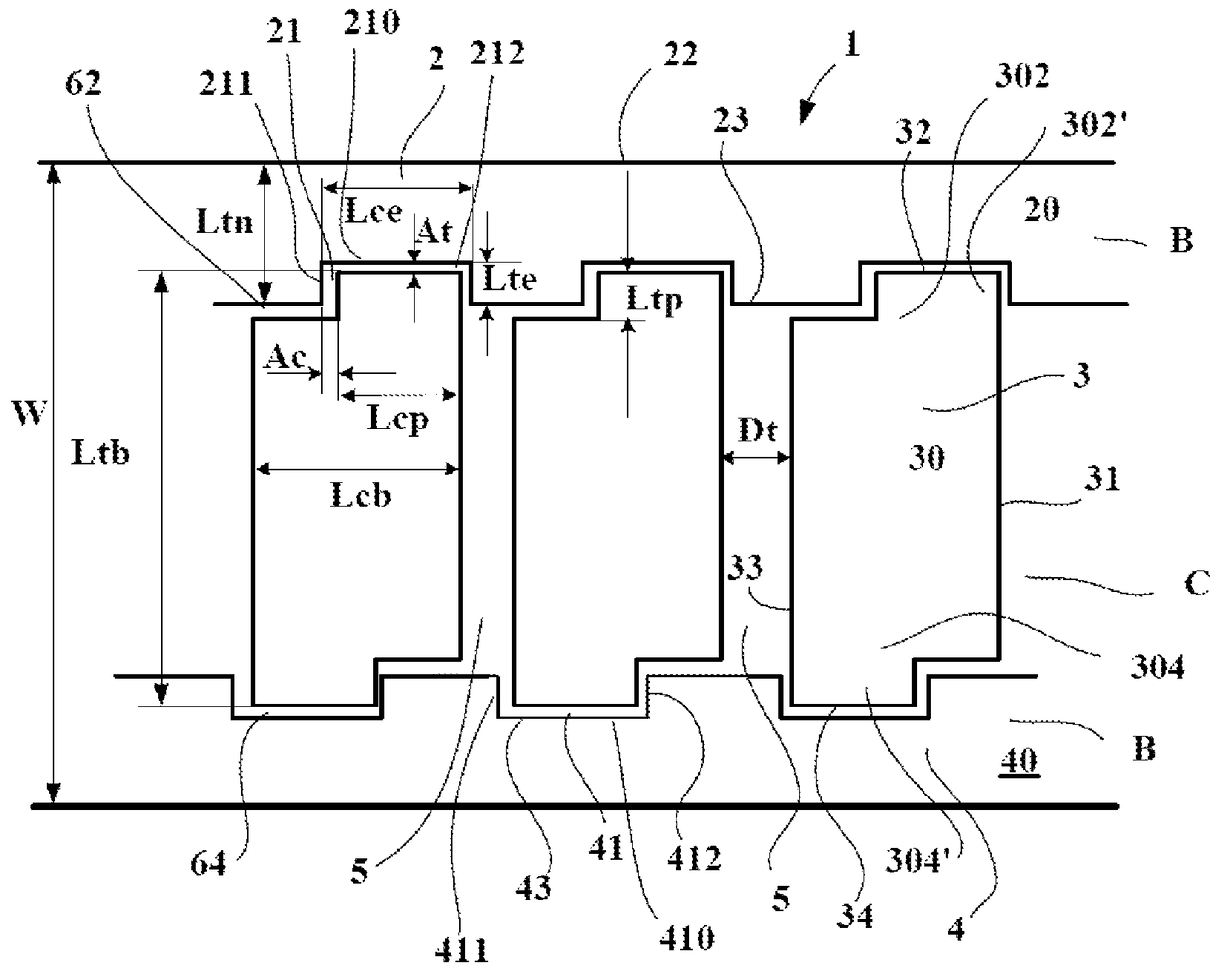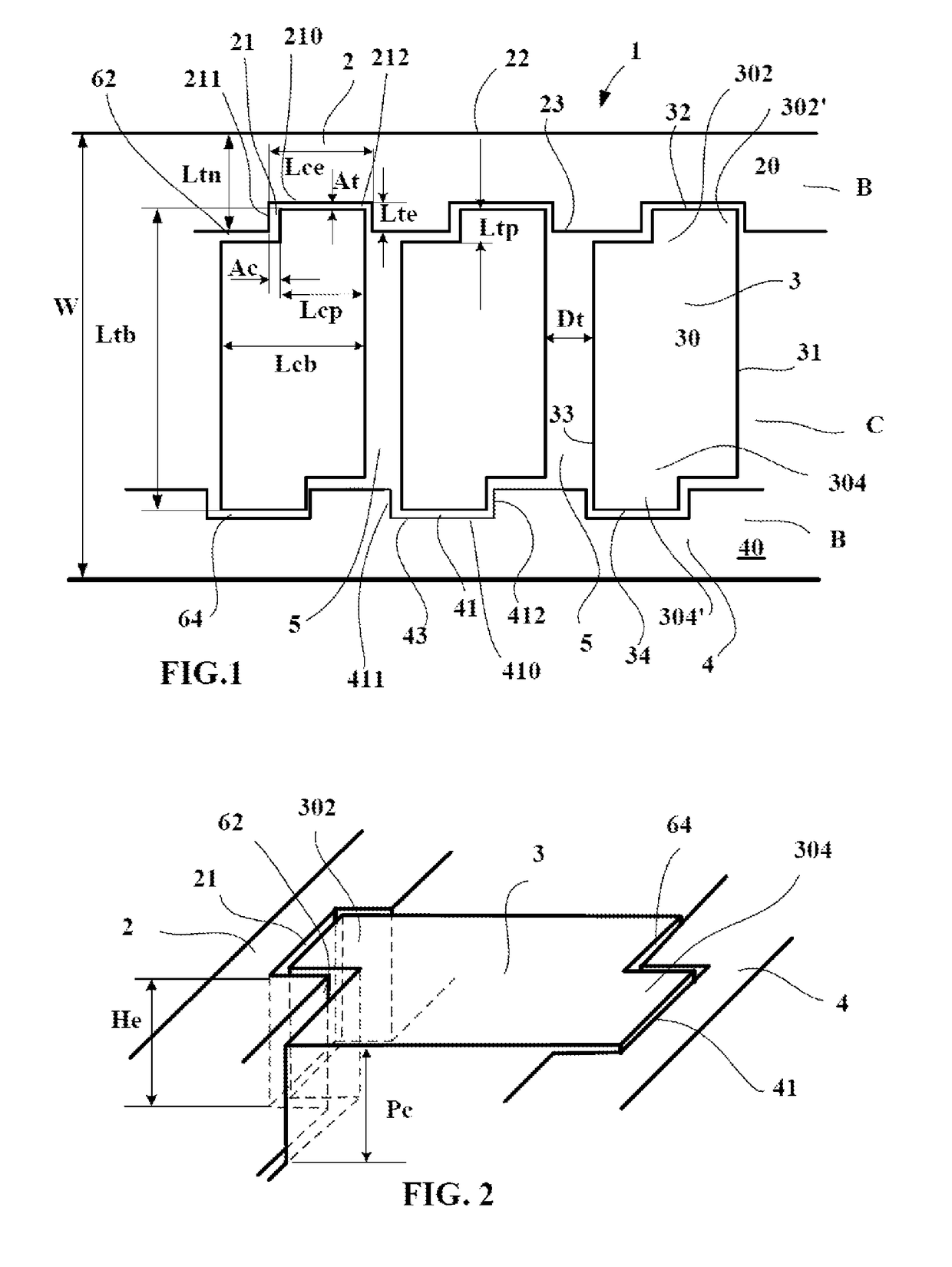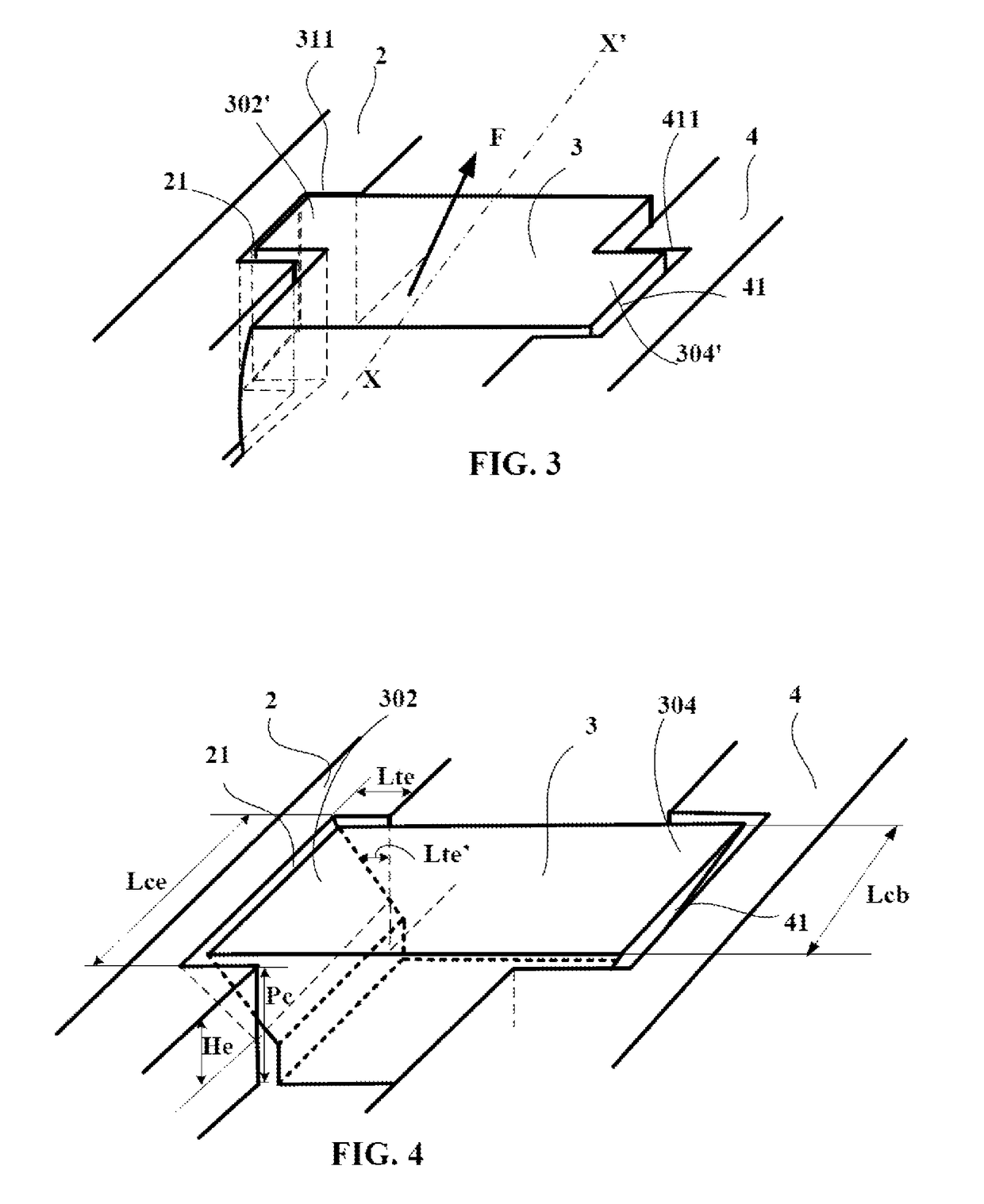Thick tread for civil engineering tires
a technology for civil engineering tires and treads, applied in the direction of heavy duty tyres, vehicle components, transportation and packaging, etc., can solve the problems of reduced active edge length, reduced available groove volume, water infiltration, etc., and achieve the effect of limiting the undesirable effects of distance differences
- Summary
- Abstract
- Description
- Claims
- Application Information
AI Technical Summary
Benefits of technology
Problems solved by technology
Method used
Image
Examples
Embodiment Construction
[0044]In the drawings accompanying this description, the same reference symbols are used to describe variants of the invention where these reference symbols signify elements which are of the same kind in respect of their structure or function.
[0045]FIG. 1 shows part of a rolling surface of a tread 1 of a civil engineering tire with a size of 18.00 R 33. This tread is provided with a pattern formed by three circumferential rows, namely two edge rows B and a central row C. The tread has a total width W which is equal to 440 mm in the present case.
[0046]These rows B and C are separated by generally circumferentially orientated grooves 62, 64 having a depth Pc equal to 70 mm and a mean width Dc equal to 20 mm.
[0047]The central row C comprises a plurality of blocks 3 delimited from one another by transverse grooves 5 having a mean width Dt equal in the present case to 15 mm and a depth Pt equal to 70 mm.
[0048]Each block 3 of the central region C comprises a contact face 30 intended to co...
PUM
 Login to View More
Login to View More Abstract
Description
Claims
Application Information
 Login to View More
Login to View More - R&D
- Intellectual Property
- Life Sciences
- Materials
- Tech Scout
- Unparalleled Data Quality
- Higher Quality Content
- 60% Fewer Hallucinations
Browse by: Latest US Patents, China's latest patents, Technical Efficacy Thesaurus, Application Domain, Technology Topic, Popular Technical Reports.
© 2025 PatSnap. All rights reserved.Legal|Privacy policy|Modern Slavery Act Transparency Statement|Sitemap|About US| Contact US: help@patsnap.com



